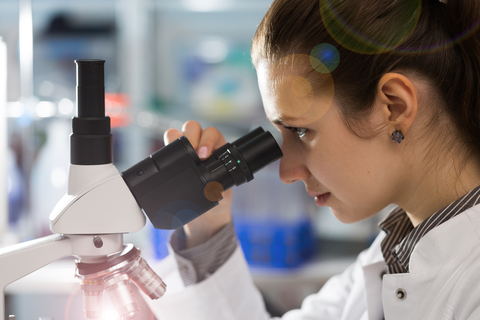MRSA survival chances predicted by DNA sequencing

University of Bath scientists, publishing in Nature Microbiology, have said sequencing the DNA of MRSA can accurately identify patients most at risk of death and could help medics develop new treatments.
MRSA is a Staphylococcus aureus bacterium that has become resistant to most types of antibiotics, and up to 20% of patients with invasive infections die. While S. aureus is a common bacterium that lives on the skin, if it gets inside the body through a cut it can cause septicaemia. This potentially life threatening infection affects thousands of patients every year in the UK. There are two main strains of MRSA found in UK hospitals, called CC22 and CC30.
For the first time a team of scientists led by the Milner Centre for Evolution at the University of Bath were able to study blood samples from around three hundred patients with septicaemia, looking at how the different MRSA strains behaved and assessing their lethality. They examined the genetic code of the infecting MRSA bacteria, and paired this information with individual risk factors for each patient, including age, presence of any other illnesses, and noted whether the patient was still alive after thirty days of the infection and if deceased whether MRSA contributed to their death. Paired together this information allowed the team predict with high accuracy the individual’s probability of surviving the MRSA infection.
Dr Ruth Massey, who led the research at the Milner Centre for Evolution at the University of Bath, said “Our study is important because it’s the first time we’ve collected data in human patients rather than relying solely on animal models. We’ve combined information from real people with phenotypic and DNA sequence data from the bacteria causing the infections. For the first time we’ve been able to predict which strains are most virulent, or likely to cause disease, and the outcomes of infection. We’ve previously found that the most highly toxic MRSA strains were less likely to cause septicaemia, however this research shows that when it does, it is more deadly than other strains. What is clear is that we still have a long way to go to understand how this pathogen causes disease.”
DNA sequencing was performed alongside measuring the toxicity, or ability to kill human cells, of the MRSA strains as well as their ability to form dangerous biofilms. Biofilms form when groups of bacteria secrete proteins that stick them together and coat surfaces in slime. Biofilms makes it easier for bacteria to evade the patient’s immune system and can block the action of antibiotics. They are a particular problem in patients using catheters where up to half of patients can get an infection.
The researchers found that for CC22 strains, both their toxicity and biofilm forming abilities played a significant role in whether the patient survived their infection. However these did not appear to be involved in the patient outcome for those infected with CC30 strains, meaning this strain is killing people in a different way. The researchers hope that this information will help researchers better understand how MRSA kills and therefore aid development of new treatments and infection control.
Ruth Massey said “Unfortunately 20 per cent of patients with septicaemia die and cases are on the increase – this suggests that existing infection control and treatment options are insufficient to tackle this important health problem. We’ve identified that MRSA kills people in different ways depending on the strain, and that the low toxicity CC30 strains are killing patients in an as yet unknown mechanism. It could be that they are better at evading the immune system. We need further research to find out how they do this, in order to develop new treatments for these patients. Our study further demonstrates the use of a combined genomics and data analytic approach to enhance our understanding of bacterial infection at the individual level, which will be an important step towards personalised medicine and infectious disease management.”
The team of researchers included scientists from the Universities of Bath, Exeter, Bristol, Cambridge and the London School of Hygiene and Tropical Medicine.








